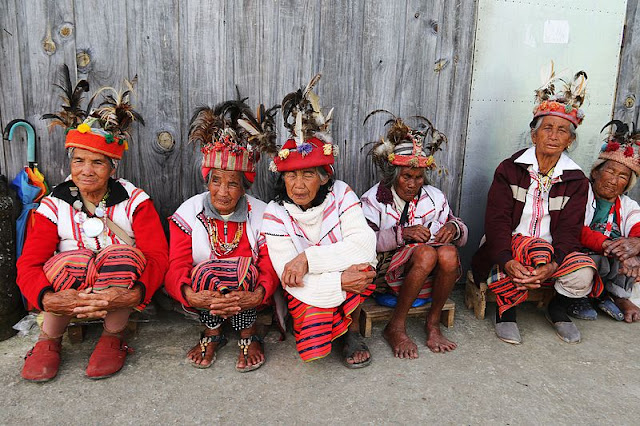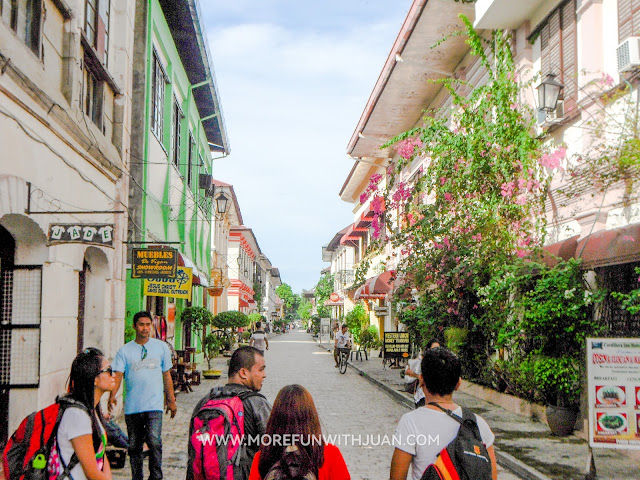This church is not only one of the oldest but one of the most beautiful churches in the Philippines. I'm glad that I got to see the church personally when I had my Intramuros walk tour last month.
The Church of Saint Augustine also known as the Archdiocesan Pontifical Shrine of Our Lady of Consolation and Cincture or the Immaculate Conception Parish, is a Roman Catholic church under the auspices of the Order of Saint Augustine located inside the historic walled city of Intramuros in Manila, Philippines. Completed in 1607, it is the oldest stone church in the country.
Loading...
In 1993, San Agustin Church was one of four Philippine churches constructed during the Spanish colonial period to be designated as a World Heritage Site by UNESCO, under the collective title Baroque Churches of the Philippines.
 |
| San Agustin Church during my photo walk in 2022 |
It was named a National Historical Landmark by the Philippine government in 1976.
Pope John Paul II granted a canonical coronation towards its enshrined Marian image of "Our Lady of Consolation" on 4 September 2000.
San Agustin Church in Details
Names:
- Archdiocesan Shrine of Our Lady of Consolation and Cincture
- Immaculate Conception Parish
- Santuario Arquidiocesano de Nuestra Señora de la Consolación y Correa
- Simbahan ng San Agustin
- Iglesia de San Agustín
 |
| San Agustin Church facade |
Location: Intramuros, Manila
Country: Philippines
Denomination: Roman Catholic
Former name: Iglesia de San Pablo de Manila
Founded: 1571
Founder(s): Order of St. Augustine (Province of the Most Holy Name of Jesus of the Philippines)
Dedication: St. Paul
Consecrated: 1607
Functional status: Active
Heritage designation: World Heritage Site
Designated: 1993
Architect: Juan Macías
Style: Baroque
Groundbreaking: 1586
Completed: 19 January 1607
Length: 67.15 m (220.3 ft)
Width: 24.93 m (81.8 ft)
Number of spires: 1 (a second bell tower was destroyed in 1880)
Materials: Adobe stones
Province: Manila
Archdiocese: Roman Catholic Archdiocese of Manila
UNESCO World Heritage Site
Official name: Immaculate Conception Parish - San Agustin Church
Part of: Baroque Churches of the Philippines
Criteria: Cultural: (ii)(iv)
Reference: 677bis-001
Inscription: 2037 (60th Session)
Extensions: 2013
Area: 2.43 ha (262,000 sq ft)
Buffer zone: 106.13 ha (11,424,000 sq ft)
San Agustin Church History
San Agustin Church is located in General Luna St, Manila, Metro Manila. The present structure is actually the third Augustinian church erected on the site.
The first San Agustin Church was the first religious structure constructed by the Spaniards on the island of Luzon. Made of bamboo and nipa, it was completed in 1571, but destroyed by fire in December 1574 during the attempted invasion of Manila by the forces of Limahong.
A second wooden structure built on the same site was destroyed in February 1583 by a fire that started when a candle ignited drapery on the funeral bier during services for Spanish Governor-General Gonzalo Ronquillo de Peñalosa.
The Augustinians decided to rebuild the church using stone, and to construct an adjacent monastery. Construction began in 1586, based on a design by Juan Macías. The structure was built using hewn adobe stones quarried from Meycauayan, Binangonan and San Mateo, Rizal.
The monastery was operational by 1604, and the church was formally declared complete on 19 January 1607 and named Church of St. Paul of Manila.
The massive structure of the church is highlighted by the symmetry and splendor of the interiors (painted by two Italians who succeeded in producing trompe l'oeil) – the profile of the mouldings, rosettes and sunken panels which appear as three-dimensional carvings, a baroque pulpit with the native pineapple as a motif, the grand pipe organ, the antechoir with a 16th-century crucifix, the choir seats carved in molave with ivory inlays of the 17th century and the set of 16 huge and beautiful chandeliers from Paris.
The San Agustin Museum and Cultural Center right beside it has two floors, several galleries, and hallways that showcase religious art. Notable displays include recreated pharmacy pots from the 16th century, litograph prints of Philippine flowers, and shelves with books dating all the way from 1522.
 IMPORTANT NOTE: The rates, contact details and other information indicated in this post are accurate from the time of writing but may change without IMFWJ's notice. Should you know the updated information, please let us know by leaving a message in the comment box below.
IMPORTANT NOTE: The rates, contact details and other information indicated in this post are accurate from the time of writing but may change without IMFWJ's notice. Should you know the updated information, please let us know by leaving a message in the comment box below.
San Agustin Church during Earthquakes
On 3 June 1863, the strongest earthquake at that time hit Manila leaving widespread destruction to the city, with San Agustin Church the only public building left undamaged.
A series of strong earthquakes struck Manila again on 18–20 July 1880. This time, the tremors left a large crack in the east bell tower. The crack was eventually repaired, but the left tower was permanently removed with only the base remaining today.
The church withstood the other major earthquakes that struck Manila before in 1645, 1699, 1754, 1796, 1825, 1852, 1863 and 1880 and served as a hospital for several of those injured during the earthquake in 1863.
San Agustin Church Architecture
The San Agustin Church is patterned after some of the magnificent temples built by the Augustinians in Mexico. The present edifice was built in 1587, and completed, together with the monastery, in 1604. The atmosphere is medieval since "both church and monastery symbolize the majesty and equilibrium of a Spanish golden era."
 |
| San Agustin Church interior |
The massive structure of the church is highlighted by the symmetry and splendor of the interiors (painted by two Italians who succeeded in producing trompe l'oeil) – the profile of the mouldings, rosettes and sunken panels which appear as three-dimensional carvings, a baroque pulpit with the native pineapple as a motif, the grand pipe organ, the antechoir with a 16th-century crucifix, the choir seats carved in molave with ivory inlays of the 17th century and the set of 16 huge and beautiful chandeliers from Paris.
The church was renovated in 2013, with its colorful facade replaced by a sedate stone-colored one. San Agustin Church is currently administered by the Augustinian friars of the Province of the Most Holy Name of Jesus of the Philippines.
A 2022 online study conducted by home services website Angi found out that the church is the "most beautiful building in the Philippines".
OTHER CHURCHES TO VISIT IN MANILA
- Manila Cathedral in Intramuros, Manila
- Basilica of the Black Nazarene a.k.a. Quiapo Church in Manila
- Minor Basilica of San Lorenzo Ruiz a.k.a. Binondo Church
- San Sebastian Church in Quiapo, Manila
- Our Lady of Remedies Parish (Malate Catholic Church)
Convento de San Agustin
San Agustin Church and its adjacent convent, Convento de San Agustin, served as the provincial house and headquarters of the Augustinian Province of the Most Holy Name of Jesus of the Philippines of Spain ever since the province's founding in 1575 until 1901, when it transferred to Madrid. It once again became the headquarters of the Province in 1927, during the tenure of Fr. Gaudencio Castrillo, O.S.A. until just after the Second World War.
San Agustin Museum
This is the museum with a collection of artifacts & artwork in a former monastery adjacent to a San Agustin Church.
 |
| The famous path inside San Agustin Museum |
The San Agustin Museum and Cultural Center right beside it has two floors, several galleries, and hallways that showcase religious art. Notable displays include recreated pharmacy pots from the 16th century, litograph prints of Philippine flowers, and shelves with books dating all the way from 1522.
Famous Burials at San Agustin Church
The church, as in its custom in its heyday, contained niches for burials of bones and remains. The following are notable burials within the premises of the church.
- Miguel López de Legazpi
- Juan de Salcedo
- Guido de Lavezaris
- Juan Luna
- Blessed Pedro Zuñiga
- Francisco Alonso Liongson
- Benito Natividad
- Teodoro Agoncillo
How to Get to San Agustin Church
San Agustin Church is located in the heart of Intramuros, the walled district in Manila.
Getting to Intramuros by Train
The three main train lines running in Metro Manila can take you near Intramuros: Light Rail Transit (LRT) 1 and 2, and the Manila Metro Rail Transit.
Anyone coming in from nearby cities or provinces can get off the station nearest to them and still reach Intramuros because all three lines are connected.
MRT and LRT1 connect at Baclaran and North Avenue Stations, MRT and LRT2 meet at Araneta-Cubao, and LRT1 and 2 are joined at Doroteo Jose.
The station closest to Intramuros is the LRT1 Central Terminal Station. LRT1 runs from Baclaran to Monumento.
Once you get to Intramuros, take a walk to General Luna St. cor Real St.
Getting to Intramuros by Jeepneys (PUJs)
Jeepneys are the KINGS of Manila's road. Of course, there's a jeepney route to Intramuros, too! Here are different routes you can take from several points in Metro Manila. See my full Intramuros Commuting Guide to know more.
Getting to Intramuros by a Private Car
If you plan to bring your own vehicle, please note that the parking in this area is limited. (Check out my list of best parking spots in Intramuros)
However, you can follow driver directions from Waze or Google Maps.
ATTRACTIONS TO SEE IN MANILA
Klook.comSan Agustin Church
Address: General Luna St, Intramuros, Manila, 1002 Metro Manila
Phone Number: (02) 8527 2746
San Agustin Church Mass Schedule
- 8:00 AM / 10:00 AM / 6:00 PM (Sunday)
- 6:45 AM / 5:30 PM (Monday – Friday)
- 7:00 AM / 5:30 PM (Saturday)
San Agustin Museum Entrance Fee
- P200: Adults
- P160: Students, PWDs, Seniors, & Frontliners
Attractions Near San Agustin Church
Here are famous tourist spots near San Agustin Church:
- Fort Santiago
- Manila Cathedral
- Casa Manila
- Museo de Intramuros
- Baluarte de San Diego
- Baluarte de San Andres
- National Museum Complex
- Rizal Park/Luneta Park
- Manila Ocean Park
WHERE TO NEXT?
- VISITA IGLESIA GUIDE: 7 Churches to Visit in Manila (Location & Map)
- PILGRIMAGE: List of Marian Shrines in the Philippines
- MANILA TRAVEL GUIDE: Tourist Spots, Things To Do, Where To Eat and Where to Stay
- REDISCOVER MANILA: 20+ Tourist Spots To Visit At Night (Things To Do & New Places To Go)
- INTRAMUROS GUIDE: Historic Walled City in Manila (What to See & to Do)
ACTIVITIES AND TOURS IN MANILA
WHERE TO STAY IN MANILA
- Octagon Mansion Hotel - Check Rates and Availability!
- Bayview Park Hotel - Check Rates and Availability!
- Go Hotels Ermita - Check Rates and Availability!
- City Garden Suites Hotel - Check Rates and Availability!
- Pearl Manila Hotel - Check Rates and Availability!
- Sunny Bay Suites - Check Rates and Availability!
 IMPORTANT NOTE: The rates, contact details and other information indicated in this post are accurate from the time of writing but may change without IMFWJ's notice. Should you know the updated information, please let us know by leaving a message in the comment box below.
IMPORTANT NOTE: The rates, contact details and other information indicated in this post are accurate from the time of writing but may change without IMFWJ's notice. Should you know the updated information, please let us know by leaving a message in the comment box below.



















_-_Flickr.jpg)





















